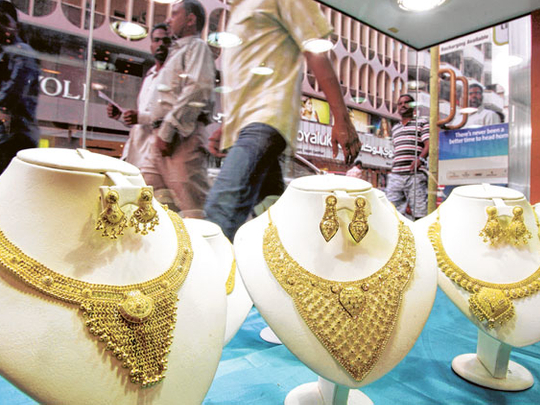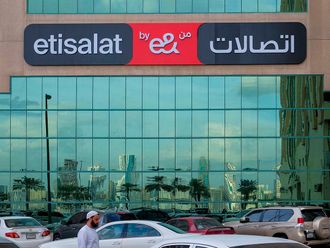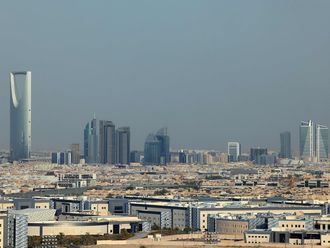
Dubai: Gold jewellery sales in the UAE picked up slightly — by 9 per cent — in the second quarter to total 12.2 tonnes from a year ago.
But retailers have little to cheer about as the Q2-17 total represents a dip from the 14.5 tonnes recorded in the first three months of this year, according to the latest updates from World Gold Council.
There were also some gains in demand for gold bars and coins during the April to June period.
To put the numbers in perspective, the best performance UAE jewellery sector had in the last 10 quarters was in Q1-15, when demand touched 16.3 tonnes.
Saudi Arabia remains the biggest regional jewellery market, with the second quarter seeing 47.7 tonnes being sold.
Clearly, in the UAE, “there is little sign of sustained confidence among consumers, but they did manage to discount the impact of the import duty on jewellery (in Dubai),” said London-based John Mulligan, Head of Member and Market Relations at WGC.
Earlier this year, authorities in Dubai removed the import duty exemption on jewellery, but retailers by and large have managed not to pass on the full impact on shoppers.
At the same time, the zero per cent duty on bullion remains intact.
As with other key retail categories, WGC reckons that gold and jewellery sales should see a spike in the fourth quarter and before the VAT comes into effect early 2018.
“It’s a specific trigger for sales and we have seen that happen in other markets where such taxes have come into effect,” said Mulligan.
“But, across the board, the regional situation and other factors continue to be responsible for the weak consumer market.”
But Chirag Vora, Director of Bafleh Jewellers, feels the economy had only a small part to play in depressing buying activity.
“Rising gold prices as well as the lack of tourists in summer can be part of the reasons,” he said.
“Demand still remains from mid-income consumers due to their vacation travel back home as well as their sentimental attachment to the metal. But overall discretionary spending on jewelry has come down definitely.”
Globally, gold buying in all its forms totalled 953 tonnes, down 10 per cent against the 1,056 tonnes recorded in Q2-16.
Institutional buyers
Institutional buyers were primarily responsible for the decline, as exchange traded funds — extremely active in recent quarters — took to buying less of the metal, WGC numbers released on Thursday (August 3) show.
Investment demand fell a substantial 34 per cent to 297 tonnes. As for ETF-driven demand, the current volumes represent a “return to normalisation” after fevered buying activity all through 2016.
To compensate, but slightly, consumer demand was up, by 9 per cent, to 722 tones. Jewellery demand gained 8 per cent to 481 tonnes, led principally by buyers in India. Central banks also lent a hand in pushing bullion volumes, leading to a 20 per cent gain over Q2-16.
On the supply side, gold was down 8 per cent to 1,066 tonnes in three months ending June.
Thankfully for the gold marketplace, jewellery demand improved in India, with much of the volumes being attributed to the “forward buying” shoppers indulged in before the 3 per cent GST (goods and service tax) came into effect on July 1. Gold jewellery accounted for 126.7 tonnes, up 41 per cent year-on-year.
“Apart from the pre-GST buying, the gains were also brought by a sense of normalisation felt after the demonetisation move (which India imposed in November 20160,” said Mulligan.
“But Q3-17 buying could be a little down because of the scale of advance buying that’s already taken place. But on the whole, it’s been a benign environment for jewellery sales in India.”
Some of that benign buying support also extended to the UAE… and continue to do so for the next few months. Until VAT comes into effect, gold buyers from India can still avail of the 10 per cent plus price benefit — on a per gram basis — from picking up gold jewellery here as compared to doing so in their home market.
Shamlal Ahmad, Managing Director of International Operations at Malabar Gold & Diamonds, sure seems confident this will remain the case.
“The GST implementation in India has favored the jewellery industry in the UAE. There is a general slowdown in the GCC due to summer and school holidays. This scenario will change from October due to multiple factors like festivities, holiday season, shopping festivals and tourist influx.”












